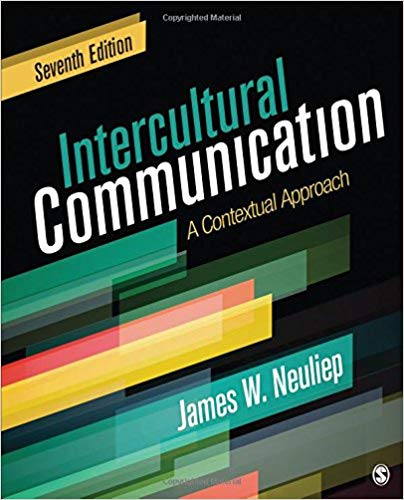Description
Intercultural Communication A Contextual Approach 7th Edition by James W. Neuliep – Test Bank
Chapter 2: The Cultural Context
Multiple Choice
1. Which of the following types of cultures emphasize individual goals over group goals?
a. individualistic cultures
b. large power distance cultures
c. small power distance cultures
d. high-context cultures
Ans: A
Answer Location: Individualism
Learning Objective: 2-1: Recognize that no culture is purely individualistic or purely collectivistic
Cognitive Domain: Knowledge
Difficulty Level: Easy
2. Which of the following statements best describes a collectivistic culture?
a. Emphasis is placed on individuals’ goals over group goals.
b. People communicate using a restricted code.
c. People are taught to be creative, self-reliant, competitive, and assertive.
d. Stresses values that serve the in-group.
Ans: D
Answer Location: Collectivism
Learning Objective: 2-1: Recognize that no culture is purely individualistic or purely collectivistic
Cognitive Domain: Knowledge
Difficulty Level: Easy
3. Which of the following statements best describes an individualistic culture?
a. It stresses approval of the outgroup.
b. People are seen as interdependent with others.
c. Self-concept is consistent with public behavior.
d. People communicate using a restricted code.
Ans: C
Answer Location: Individualism
Learning Objective: 2-1: Recognize that no culture is purely individualistic or purely collectivistic
Cognitive Domain: Comprehension
Difficulty Level: Medium
4. Which of the following countries is the most individualistic?
a. United States
b. Japan
c. Russia
d. Brazil
Ans: A
Answer Location: So Who’s an Individualist, and Who’s a Collectivist?
Learning Objective: 2-1: Recognize that no culture is purely individualistic or purely collectivistic
Cognitive Domain: Knowledge
Difficulty Level: Easy
5. Which of the following countries is the most collectivistic?
a. United States
b. Japan
c. Russia
d. Canada
Ans: B
Answer Location: So Who’s an Individualist, and Who’s a Collectivist?
Learning Objective: 2-1: Recognize that no culture is purely individualistic or purely collectivistic
Cognitive Domain: Knowledge
Difficulty Level: Easy
6. Which of the following statements best describes a high-context culture?
a. It stresses approval of the out-group.
b. People are seen as interdependent with others.
c. Self-concept is consistent with public behavior.
d. People communicate using a restricted code.
Ans: D
Answer Location: Characteristics of High- and Low-Context Cultures
Learning Objective: 2-3: Identify some cultures that are high context and some that are low context
Cognitive Domain: Knowledge
Difficulty Level: Easy
7. Which of the following statements best describes a low-context culture?
a. People communicate using a restricted code.
b. Nonverbal code is the primary source of information.
c. Verbal code is the primary source of information.
d. Heavy reliance on the contextual elements of the communication setting.
Ans: C
Answer Location: Characteristics of High- and Low-Context Cultures
Learning Objective: 2-3: Identify some cultures that are high context and some that are low context
Cognitive Domain: Knowledge
Difficulty Level: Easy
8. Which one of the following countries is considered a high-context culture?
a. Canada
b. South Korea
c. England
d. Saudi Arabia
Ans: B
Answer Location: Characteristics of High- and Low-Context Cultures
Learning Objective: 2-3: Identify some cultures that are high context and some that are low context
Cognitive Domain: Knowledge
Difficulty Level: Easy

Reviews
There are no reviews yet.